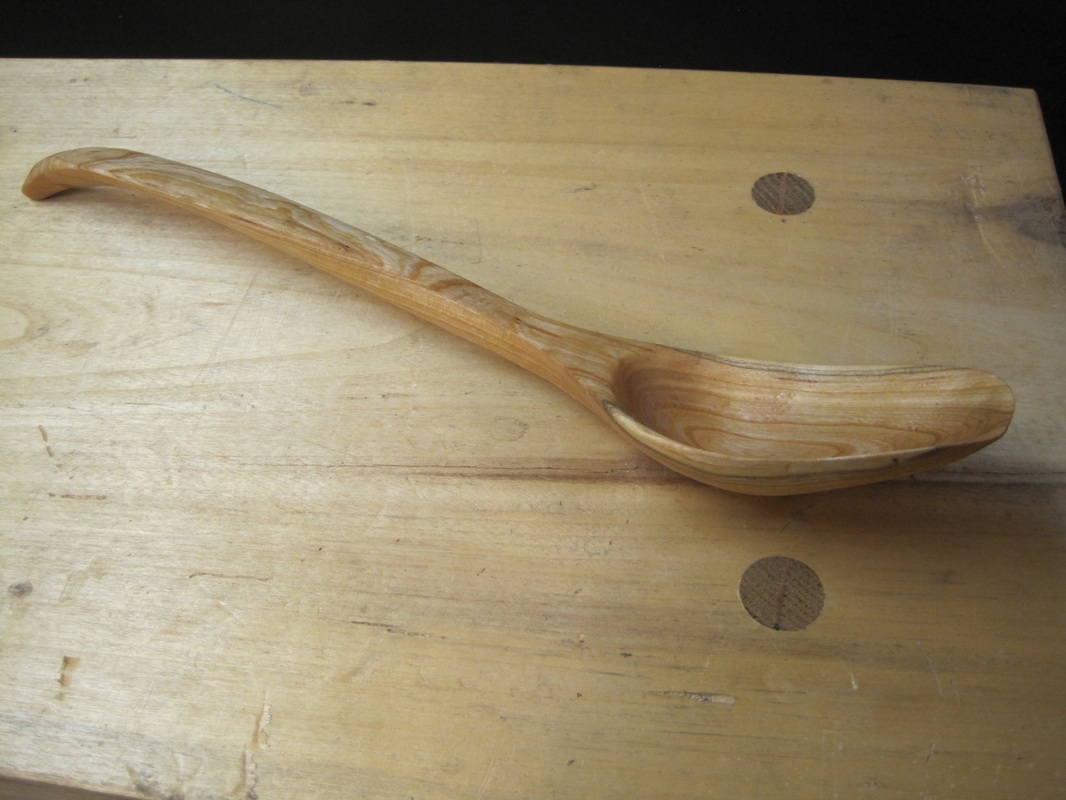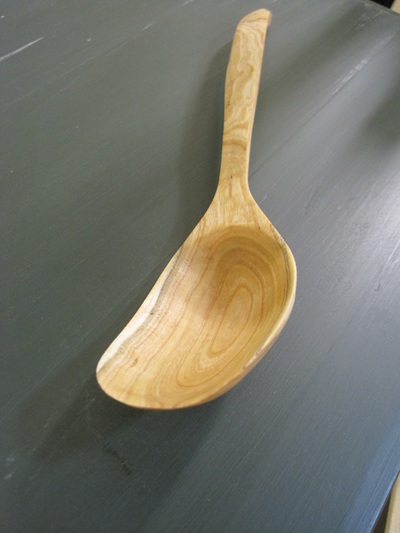|
When a tree falls, what do you do with it? Until our most recent generations, those who lived on the land knew the best uses for their harvested and windfall trees—from timber framing and furniture from oaks to weaving baskets and chair seats with hickory bark and willow branches. Those examples might seem like an anachronism today, but maybe they shouldn’t be. At least the thought process behind them shouldn’t be. I try to use natural resources to their highest purpose. The best most of us do with downed trees is cutting them for firewood and composting the remainder. That’s not bad. Under the right conditions, firewood is a renewable heat source. Sustainable forestry practices also recommend leaving at least twenty-five percent of any tree on site to decompose and feed the insects, fungi, and microbes that feed the soil. Depending on the tree, we can do better. The Bur Oak that fell across my fence path this the summer will be mostly firewood, but I saved three logs, waxing the ends and rolling them onto slats to dry slowly in the shade until I can get to them later, i.e., when the hogs are dead. I check my fence through the woods twice a day to make sure no branches have fallen across the wire, which could a) ground out the wire, and/ or b) create a breach for the hogs to get out. Last week, I came across a Black Cherry limb almost on the fence. Limbs usually just get tossed in a pile to decompose, but when I noticed a gentle crook without any branches extending from it, I sawed out the piece. (What? You don’t carry a folding saw in the right tool pocket of your Carhartts?) Back at the barn, split the section into two pieces with a froe and cleaned the bark off the sides with a hatchet, revealing the grain. A couple cuts with the saw defined the handle from the bowl, then I started cleaving away with the hatchet. Wood this green, i.e. wet, peels away in gratifying strips instead of chips. I had a rough shape in five minutes. I spent a few evenings working on the spoon, maybe a half-hour at at time. I even worked on it in a few five-minute sessions after lunch. It might seem odd that one project could reinvigorate me before working on another, but the spoon pointed my focus at the intersection of honed steel and grain—discover, explore, discover more. Part of working with wood like this is “reading” the grain. Every cut felt like turning the pages of a book, getting deeper into a story. The curve from handle to bowl follows the grain. The spoon remains very strong with minimal bulk that way. It also means that nature dictated the best form—I just needed to peel back layers to discover it. It’s more than a serving spoon: It’s the spoon from a Black Cherry branch I found one fall day while checking fence; the spoon I hewed out with the metal hammer-handled hatchet I begged my parents to let me buy from Orange’s Hardware store when I was ten; the first spoon I’ve carved where the final form matched the image held in my head from the moment I sawed the branch. It’s the most satisfying and simplest project I’ve done in a long time.
0 Comments
Your comment will be posted after it is approved.
Leave a Reply. |
Ryan Erisman
Former Marine Infantry Officer. Iraq Vet. Interested in Regenerative Agriculture at any scale. Archives
February 2023
Categories |
Odyssey Farm, LLC.
The Odyssey Farm Journal
Odyssey Farm, LLC
|
Dane County Climate Champion
|
608.616.9786
|
Copyright © 2016







 RSS Feed
RSS Feed